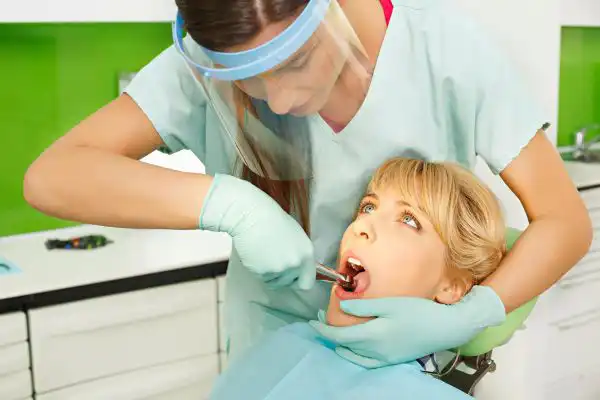Dental Extraction
Table of Contents
What is Dental Extraction?
Dental extraction, also known as tooth extraction, is a common dental procedure where a tooth is removed from its socket in the jawbone. It is usually performed by a dentist or oral surgeon and can be necessary for various reasons, including severe tooth decay, impacted wisdom teeth, or orthodontic treatment. Let’s explore this in more detail.

Why Dental Extraction Is Needed
- Severe Tooth Decay: When a tooth is extensively damaged by decay or cavities, it may not be restorable, and extraction becomes necessary to prevent further infection.
- Impacted Wisdom Teeth: Wisdom teeth, also known as third molars, often don’t have enough space to emerge properly. Impacted wisdom teeth can cause pain, infection, and misalignment of other teeth.
- Orthodontic Reasons: In some orthodontic cases, tooth extraction may be required to create space for proper alignment of teeth.
- Infection or Abscess: If a tooth infection is severe and cannot be treated with antibiotics or root canal therapy, extraction may be the only solution.
The Dental Extraction Process
Understanding the procedure step by step
Dental extraction is a carefully executed process to ensure minimal discomfort and a smooth recovery. Here’s an overview of the typical steps involved:
- Assessment and X-rays
Before extraction, your dentist will examine your tooth and take X-rays to evaluate the tooth’s position and root structure. This helps in planning the procedure.
- Anesthesia
Local anesthesia is administered to numb the area around the tooth, ensuring you won’t feel pain during the extraction.
- Tooth Removal
Using specialized dental instruments, the dentist will gently loosen the tooth and remove it from the socket.
- Post-Extraction Care
After extraction, your dentist will provide instructions for post-operative care, which may include pain management and wound care.
- Recovery
The recovery period varies but generally takes a few days to a week. During this time, it’s essential to follow your dentist’s advice for a smooth healing process.
Definition of Dental Terminology
Tooth Extraction
The removal of a tooth from its socket in the jawbone.
Tooth Socket
The cavity or space in the jawbone where a tooth is anchored.
Local Anesthesia
The use of medication to numb the area around the tooth to be extracted, ensuring the patient doesn’t feel pain during the procedure.
General Anesthesia
A state of unconsciousness induced by medication, often used for more complex or multiple tooth extractions.
Oral Surgeon
A dental specialist who is trained in surgical procedures, including tooth extractions.
Forceps
Dental instruments used to grip and remove a tooth from its socket.
Elevators
Dental instruments used to loosen a tooth from its socket before extraction.
Impacted Tooth
A tooth that cannot emerge properly through the gum due to obstruction or lack of space.
Wisdom Teeth
The third set of molars, often extracted due to overcrowding or impaction.
Extraction Site
The area in the jawbone where a tooth has been removed.
Sutures
Stitches used to close the gum tissue over the extraction site.
Dry Socket
A painful condition that can occur when the blood clot at the extraction site dislodges or dissolves prematurely.
Post-operative Care
Instructions and care procedures given to patients after a dental extraction to promote healing and prevent complications.
Complications
Potential adverse events or issues that may arise during or after a dental extraction, such as infection, bleeding, or nerve damage.
Healing Time
The period it takes for the extraction site to fully recover and for the surrounding tissues to regenerate.
Frequently Asked Questions
A: During the procedure, you should not feel any pain due to the anesthesia. Afterward, some discomfort is normal, but your dentist will prescribe pain relief medication.
A: The duration varies depending on the complexity of the extraction. Simple extractions can take minutes, while surgical extractions may take longer.
A: Complications are rare but can include infection, excessive bleeding, or damage to nearby teeth or nerves. Your dentist is trained to minimize these risks.
A: Initially, it’s best to stick to soft foods and avoid hot or spicy items. As you heal, you can gradually return to your regular diet.
A: Follow your dentist’s post-operative instructions diligently. This typically involves avoiding strenuous activities, not smoking, and maintaining good oral hygiene.
A: Depending on the tooth’s location and your dental health, your dentist may recommend a replacement option such as a dental implant, bridge, or partial denture.
